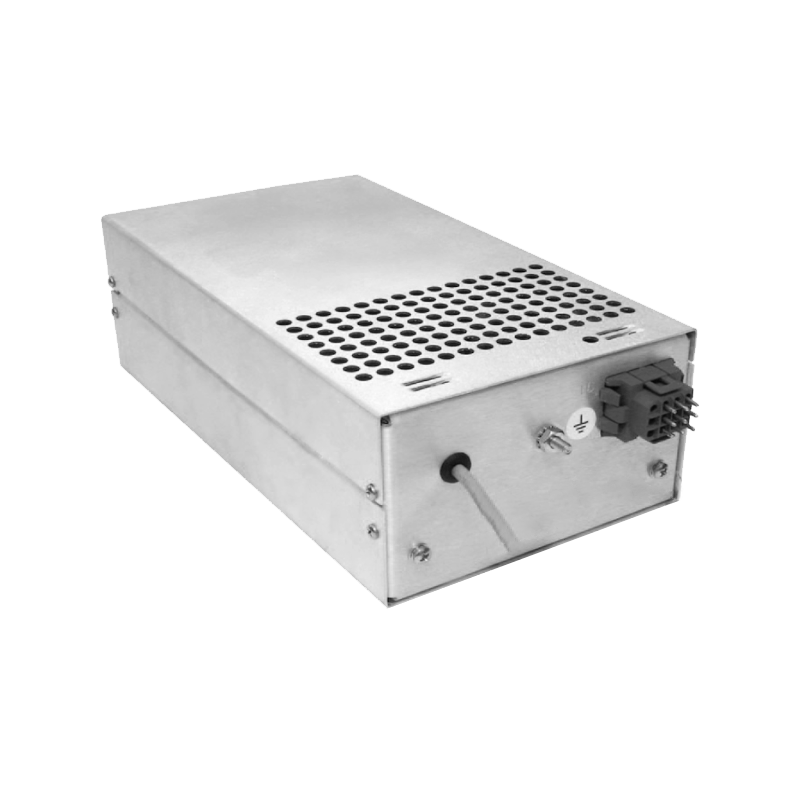Research on Key Technologies of High Voltage Power Supply in Neutron Yield Regulation
1. Physical Mechanism of Neutron Yield Regulation and High Voltage Power Supply Correlation
Neutron sources generate neutrons through particle acceleration and target bombardment, where yield (n/s) directly correlates with voltage accuracy, ripple coefficient, and dynamic response of the power supply. Experiments show that voltage fluctuations exceeding ±0.05% cause neutron yield variations of 3-5% due to changes in deuterium-tritium reaction cross-sections. A ripple coefficient above 0.1% increases beam energy dispersion, reducing yield stability by over 20%. Monte Carlo simulations indicate that voltage stability better than 0.01%/h is required to meet neutron flux consistency in medical isotope production.
2. Core Optimization Technologies for High Voltage Power Systems
1. Multi-Stage Resonant Topology Design
An LLC resonant-Marx generator cascaded architecture achieves ultra-low ripple output (0.02%) within 30-150 kV. Utilizing the high-frequency characteristics of SiC MOSFETs (500 kHz switching frequency), energy conversion efficiency exceeds 95%, while electromagnetic interference on beam monitoring systems is minimized.
2. Dynamic Beam Compensation Algorithm
An adaptive control system based on beam density feedback uses DSP to analyze Faraday cup signals in real time, dynamically adjusting output voltage phase. Experimental data show this technology reduces neutron yield fluctuations from 1.8% to below 0.5%, particularly suited for precision applications like transient neutron imaging.
3. Distributed Temperature Compensation Technology
A 64-channel thermocouple array integrated into the high-voltage generator, combined with optimized thermal resistance design using SiC substrates, controls temperature drift to 30 ppm/℃. Neutron yield deviation remains within ±0.3% across -40℃ to 85℃ operating conditions, outperforming traditional solutions (±1.2%).
3. Breakthroughs in Engineering Applications
1. Multi-Physics Coupling Control Model
A simulation platform integrating electromagnetic-thermal-mechanical stress coupling optimizes high-voltage electrode geometry and insulation via finite element analysis. Testing confirms a 40% reduction in local electric field peaks, extending continuous operation of 200 kV power supplies from 72 to over 500 hours.
2. Intelligent Fault-Tolerant Control System
Digital twin technology creates a virtual power supply mirror to predict IGBT module aging. When junction temperatures exceed safety thresholds, the system switches to redundant circuits and adjusts output curves, reducing yield decay rates by 85% under fault conditions.
4. Future Technological Trends
1. Superconducting Energy Storage Pulsed Power
High-temperature superconducting magnets achieve energy densities of 50 kJ/m³. Combined with solid-state circuit breakers (nanosecond switching), this enables 100 kV/10 kA nanosecond pulses, boosting transient neutron flux by three orders of magnitude for nuclear material detection.
2. Quantum Sensing Regulation Technology
Diamond nitrogen-vacancy center sensors monitor weak magnetic field variations, using quantum state feedback to adjust power parameters. Preliminary experiments demonstrate beam position resolution reaching 10 μm levels, enabling angstrom-scale structural analysis for neutron diffraction.




















